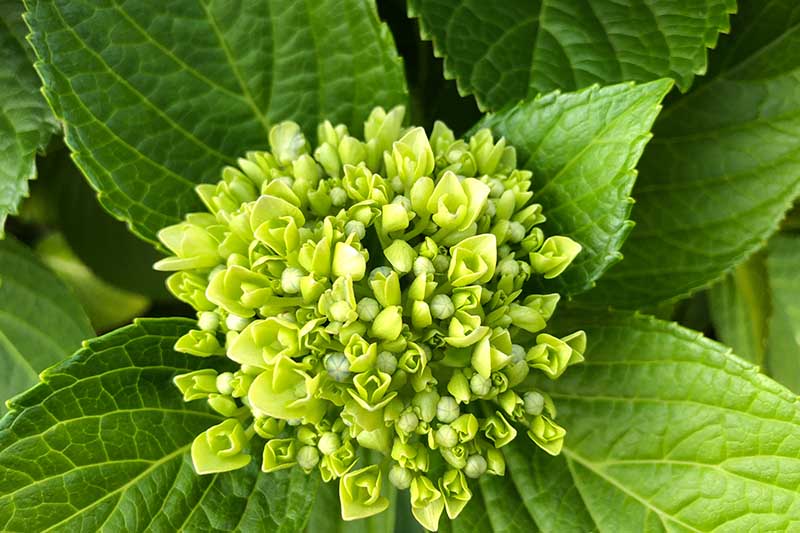Deadheading Hydrangeas: The Simple Way To Keep Your Flowers Blooming
Deadheading Hydrangeas: The Simple Way to Keep Your Flowers Blooming
Hydrangeas are beautiful flowers that can add a touch of elegance to any garden. But in order to keep them blooming their best, it's important to deadhead them regularly.
Deadheading is the process of removing spent blooms from a plant. This encourages the plant to produce new blooms and helps to keep the plant looking neat and tidy.
In the case of hydrangeas, deadheading is especially important because it helps to control the color of the flowers. For example, if you want your hydrangeas to bloom blue, you'll need to deadhead them when the blooms start to turn pink.
So, how do you deadhead hydrangeas? It's actually quite simple. Just follow these steps:
- Use a sharp pair of pruning shears.
- Locate the spent bloom.
- Cut the stem just below the flower head.
- Make sure to cut the stem at a 45-degree angle.
- Dispose of the spent bloom.
That's all there is to it! Deadheading hydrangeas is a simple task that can make a big difference in the appearance of your flowers.
Here are some additional tips for deadheading hydrangeas:
- Deadhead hydrangeas regularly throughout the blooming season.
- For reblooming hydrangeas, you can deadhead them a second time in late summer or early fall.
- Cut the stems just above a healthy set of leaves. This will help to encourage new growth.
- Dispose of the spent blooms in the trash. Do not compost them, as this can spread diseases.
Benefits of Deadheading Hydrangeas
There are several benefits to deadheading hydrangeas. Here are a few of the most important:
- Improved flowering: Deadheading encourages hydrangeas to produce more blooms. This is because the plant will focus its energy on producing new flowers instead of forming seeds.
- Neater appearance: Deadheading removes spent blooms, which can make your hydrangeas look neater and more attractive.
- Stronger stems: Deadheading can help to strengthen hydrangea stems. This is because the plant will produce more leaves, which will help to support the weight of the blooms.
- Disease prevention: Deadheading can help to prevent the spread of diseases. This is because spent blooms can harbor pests and diseases.
When to Deadhead Hydrangeas
The best time to deadhead hydrangeas is when the first set of blooms start to turn brown and dry. This is usually in the summer. However, you can also deadhead hydrangeas in the fall, but you'll need to do it before the plant starts to form buds for next year's flowers.
Conclusion
Deadheading hydrangeas is a simple task that can have a big impact on the appearance of your flowers. By following the tips in this blog post, you can keep your hydrangeas blooming their best for years to come.
Deadheading hydrangeas is a simple way to keep your plants looking their best and encourage new blooms. But what exactly is deadheading, and how do you do it?
Deadheading is the process of removing spent blooms from a plant. This helps to prevent the plant from wasting energy on producing seeds, and it also encourages the plant to produce more flowers.
To deadhead hydrangeas, simply use a sharp pair of scissors to cut the stem of the spent bloom just below the flower head. Be sure to make a clean cut, and avoid cutting into the woody part of the stem.
You can deadhead hydrangeas at any time during the blooming season, but it is best to do it when the flowers are starting to fade. This will help to keep your plants looking their best and encourage new blooms.
For more information about deadheading hydrangeas, I recommend visiting . This website has a wealth of information about hydrangea care, including detailed instructions on how to deadhead hydrangeas.
FAQ of deadheading hydrangeas
Q: What is deadheading hydrangeas?
A: Deadheading hydrangeas is the process of removing spent blooms from the plant. This helps to encourage new growth and flowering.
Q: Why should I deadhead hydrangeas?
A: There are several reasons why you should deadhead hydrangeas. First, it helps to prevent the plant from producing seeds, which can take up a lot of the plant's energy. Second, deadheading encourages the plant to produce new blooms. Third, it helps to keep the plant looking neat and tidy.
Q: When should I deadhead hydrangeas?
A: The best time to deadhead hydrangeas is in the late spring or early summer, once the first set of blooms has faded. However, you can also deadhead them in the fall, after the second set of blooms has faded.
Q: How do I deadhead hydrangeas?
A: To deadhead hydrangeas, simply use a sharp pair of pruning shears to cut the spent blooms off at the base of the stem. Be sure to make a clean cut, and avoid leaving any ragged edges.
Q: What are the benefits of deadheading hydrangeas?
A: There are several benefits to deadheading hydrangeas. First, it helps to encourage new growth and flowering. Second, it helps to keep the plant looking neat and tidy. Third, it can help to prevent the spread of disease.
Image of deadheading hydrangeas
- Image 1: A close-up of a hydrangea flower that has been deadheaded. The dead flower head has been cut off, leaving behind a healthy green stem.

- Image 2: A hydrangea bush that has been deadheaded. The dead flower heads have been removed, and the bush is now full of new growth.

- Image 3: A gardener deadheading a hydrangea bush. The gardener is using a pair of sharp shears to cut off the dead flower heads.

- Image 4: A diagram of a hydrangea flower, showing the different parts of the flower and where to cut when deadheading.

- Image 5: A close-up of a hydrangea flower bud, showing how the bud will develop into a new flower.

Post a Comment for "Deadheading Hydrangeas: The Simple Way To Keep Your Flowers Blooming"